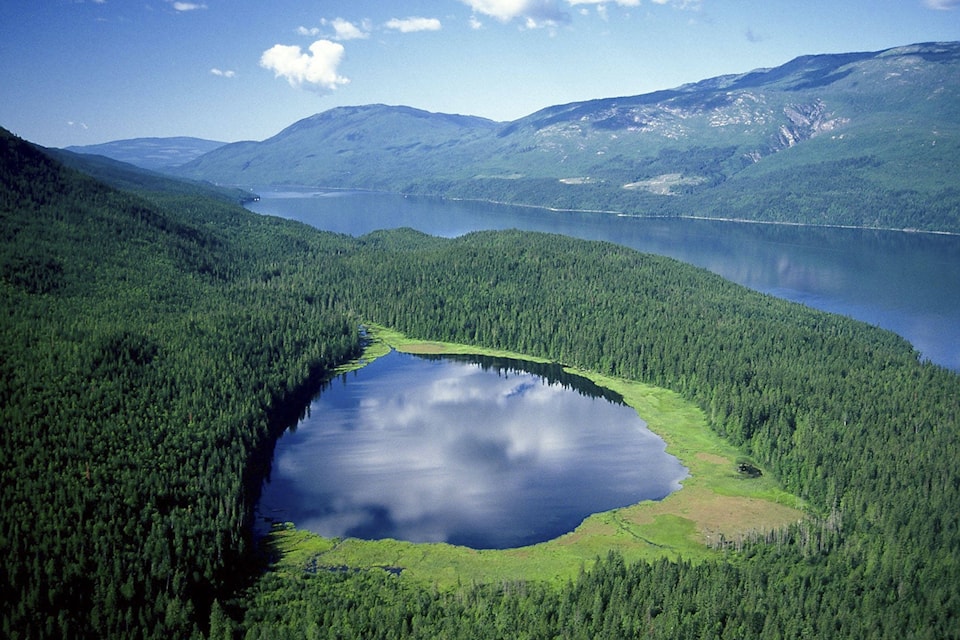The Shuswap is a beautiful and bountiful place – a region of spectacular watercourses, mountains, micro climates, biodiversity, and home to many species, including humans.
All of this and more is richly described in environmentalist Jim Cooperman’s new book, Everything Shuswap: A Geographic Handbook - Volume 1.
Through his Shuswap Market News column, Shuswap Passion, Cooperman has provided stories and data about the 1.55 million hectare region he so obviously loves.
This informative journal takes the reader on an extensive exploration of the Shuswap, looking back 4.28 billion years ago.
Learn about the forces that created the Shuswap; how volcanic, seismic and sedimentary processes forged the land that has since been shaped by other geologic events such as the ice age.
Learn how geology created the watershed that defines the Shuswap by its extensive network of rivers, lakes and streams.
“In order to understand the Shuswap, one first needs to see the big picture and know where the Shuswap begins and where it ends,” writes Cooperman, who describes in great detail the watershed’s 11 sub-drainages. “Determining where the water flows is the best way to define a bioregion…”
A chapter on the Shuswap’s diverse ecology travels through each watershed’s ecodivision, part of B.C.’s system that compares parts of the province to other parts of the world.
“It is the Shuswap’s complex distribution and location of its many mountains, plateaus, valleys, lakes, creeks and rivers plus its many microclimates that determine why there is such a variety of ecosystems to appreciate, explore and study,” writes Cooperman.
From large animals such as moose and grizzlies to smaller animals, including the wonder of winter insects, Everything Shuswap looks at who we share the region with and why we need to worry about the health of our wildlife.
A chapter on The Secwepemc People, who have called the Shuswap home for thousands of years, takes the reader into the lives of these once nomadic people.
“Few people are aware that historians estimate a population of between two and three thousand or more Secwepemc people lived in the Shuswap lakes region prior to the arrival of the fur traders in 1811,” writes Cooperman, pointing out that while they left no written records, they have a rich oral history shared through legends and traditions.
The author relates the history of the arrival of Europeans in 1808 and the beginning of the fur trade, as well as excerpts from a Hudson’s Bay journal written over a 10-year period beginning in 1857.
Cooperman describes the dark period of residential schools and the near annihilation of the rich Secwepemc culture and the terrible effect it has had on generations of First Nations.
On a much happier note, the story of how day and night and the seasons grew from a spat between a bear and a coyote is an example of the First Nations storytelling tradition that always included an important life lesson.
Historical figures are included in this chapter, including beloved late Neskonlith elder Dr. Mary Thomas, who left a lasting legacy of building bridges between cultures.
Cooperman follows up the chapter on the Secwepemc First Nation with a history of settlement, beginning in 1860, and including the era of steamships and the building of the Canadian Pacific Railway.
Everything Shuswap is also a partnership between Cooperman, School District 83 and Shuswap Press, supported by local governments, businesses, organizations and individuals.
Cooperman has gifted his work to the school district, so proceeds from the purchase of every book will be devoted to outdoor learning in the Shuswap.
He will present his book at the Monashee Arts Council’s annual general meeting Nov. 3 at 4 p.m. at the White Valley Community Centre in Lumby. A talk and slide show is followed by a potluck supper. Copies of the $30 book will be available for purchase.
Everything Shuswap is available at IGA in Enderby.
